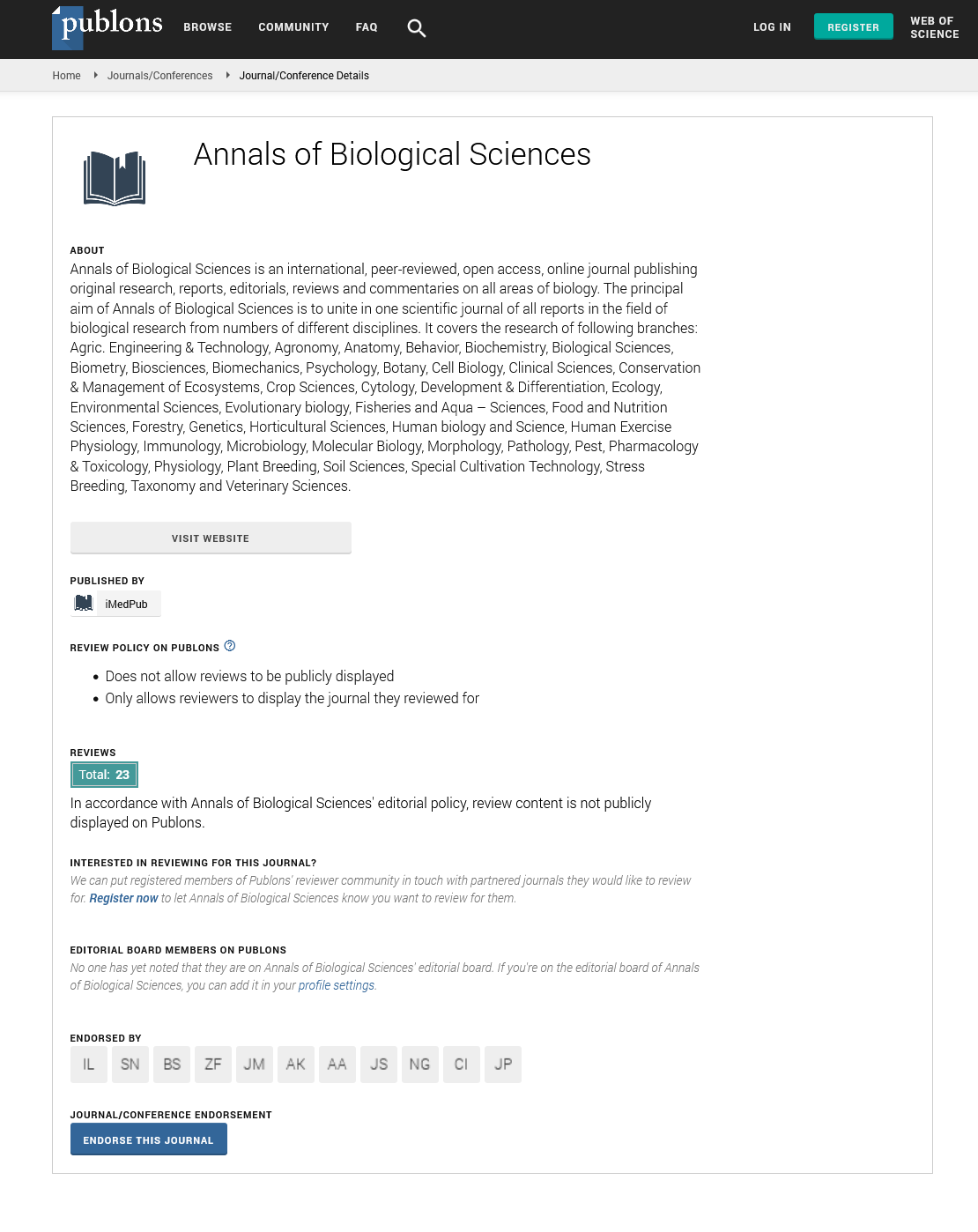ISSN : 2348-1927
Annals of Biological Sciences
Abstract
Evaluation of Antifungal Activity of Eugenia aromatica L. Bail (Cloves) on Malassezia restricta and Malassezia globossa Associated with Dandruff
Study was conducted to determine the efficacy of E. aromatica seed extracts against the growth of M. restricta and M. globossa associated with dandruff (in vitro). Fungal pathogens were microscopically identified and isolated and their frequencies of occurrence were noted. The results showed that M. globossa was the most frequently occurring pathogen with 56.4% followed by M. restricta with 43.6%. E. aromatica powder was used to prepare ethanol, aqueous and hexane extracts. The result of the extracts yield of E. aromatica showed that ethanol yield more extract with 14.30%, followed by water with 13.85% and hexane with 13.82%. Varying concentrations of the extracts such as 10, 20,40,60 and 100 mg/ml were prepared using agar incorporation method. The effect extracts against the growth of test fungi is directly proportional to the increase in concentration. The test fungi were found to be completely inhibited by all the extract of E. aromatica at the highest concentration (100 mg/ml). Thin layer chromatography of the extracts was conducted and the profiles showed 16 fractions each with varying antifungal activity against the test fungal isolates. Among the thin layer chromatographic fractions 0.04Rf of hexane extract (EAH0.04) of E. aromatica was found to have higher antifungal activity. The result of the study showed that E. aromatica contains pharmacologically active compounds; hence extracts could be used in the management of dandruff. It is therefore suggested that, the active components should be isolated and purified for proper and adequate formulations for the management of dandruff.
Author(s): Nawaf Abubakar*, Shehu K, Farouq AA, Tafinta IY and Tarbutu AG
Abstract | Full-Text | PDF
Share This Article
Google Scholar citation report
Citations : 406
Annals of Biological Sciences received 406 citations as per Google Scholar report
Annals of Biological Sciences peer review process verified at publons
Abstracted/Indexed in
- Google Scholar
- China National Knowledge Infrastructure (CNKI)
- WorldCat
- Publons
- ROAD
- Secret Search Engine Labs
Open Access Journals
- Aquaculture & Veterinary Science
- Chemistry & Chemical Sciences
- Clinical Sciences
- Engineering
- General Science
- Genetics & Molecular Biology
- Health Care & Nursing
- Immunology & Microbiology
- Materials Science
- Mathematics & Physics
- Medical Sciences
- Neurology & Psychiatry
- Oncology & Cancer Science
- Pharmaceutical Sciences
